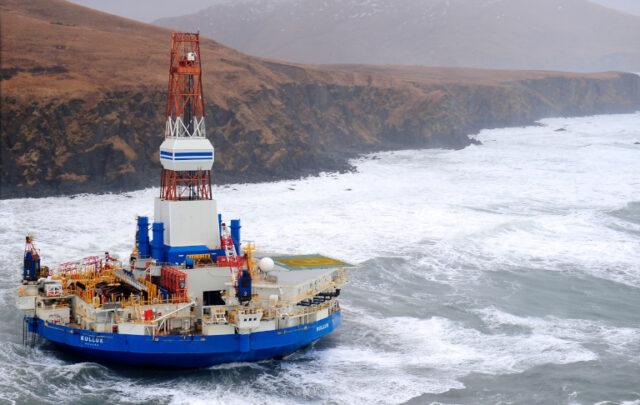Click on the headline (link) for the full text.
Many more articles are available through the Energy Bulletin homepage
Where Does the US Import Oil and Other Petroleum Products From?
Gail Tverberg, The Oil Drum
We all know that the United States is an importer of petroleum products. The United States is also an exporter of petroleum products, primarily to Mexico and Canada. Both of these countries send us crude oil, and we export refined products back to them. We often hear that Canada and Mexico are our largest sources of petroleum product imports, but is this really true if we net out exports? Canada remains number 1 when we net out exports, but Mexico drops to fifth place in 2008. (Mexico drops to third place in 2008, without netting out exports, because of its declining volume.)

(19 October 2008)
Blowhard (PO animation from 1978)
National Film Board of Canada
An animated parable that deals with a familiar subject in an amusing way. We join in the business ventures of J.B. Edwards, an easterner who went west to create a fuel company called Consolidated Dragons. The company’s profits were sorely affected when the supply of dragons started to dry up. A solution had to be found–and was.
09 min 33 s
Video clip is online.
(1978)
Jarno Makkonen writes:
This is an old film which I had seen a long time ago and i think it captures in a really neat way the concepts of Peak Oil. You may very well be aware of it, but in case you are not, you should seek it out and try to find a copy. Since it is a cartoon, it would be interesting to a younger audience but it still clearly shows the concepts of finite resources, EROEI and the inevitability of the crash of an oil based/powered economy.
Whither Oil Prices
Richard Heinberg, Post Carbon Institute
In July, oil prices overshot on the upside; now they are overshooting on the downside.
That’s the situation in a nutshell, but the back-story is more interesting and instructive than the lead.
When the cost of a barrel of crude was pushing $150, most Peak Oil writers (the present one included) were underscoring the fundamentals of demand and supply: new demand from China and the exporting countries themselves; no significant net increase in production since early 2005.
Well, as it turned out, some higher levels of supply did eventually materialize (July 2008 appears to have been the all-time peak month for crude delivery), and since then the price has fallen by more than half.
But if the price run-up was due mostly to fundamentals and not to speculation, can the same be said for the price rout?
Actually, yes—but with a caveat. Clearly, speculation has indeed played some part in both the price upswing and the subsequent crash as a magnifier of existing trends, but it is the trends themselves that are ultimately decisive. And the trend now is for falling demand. Big time…
(17 October 2008)
Engineers warn of imminent oil shock
Mathew Dearnaley, New Zealand Herald
Engineers are warning politicians that the lull in oil prices will be short-lived, and New Zealand is headed for sustained job losses unless it boosts energy efficiency efforts.
Senior North Shore City transport strategist Archer Davis, speaking on behalf of Engineers for Social Responsibility, said a conservative estimate of a 4 per cent annual decline in oil supply raises the prospect of a 12 per cent contraction of New Zealand’s economy over 15 years.
“We are looking at losses of jobs, people losing their income, we are looking at severe issues here,” he told Auckland Regional Council members in a call to action after a joint conference of the engineers’ group and the Sustainable Energy Forum on how to prepare for oil shortages.
“It will have a major impact and it will be ongoing – it won’t be short term.”
(21 October 2008)





